Eye for the Fantastic - Page 3
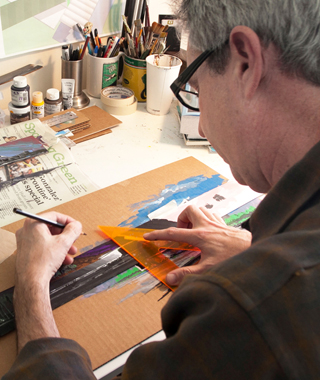 |
|
|
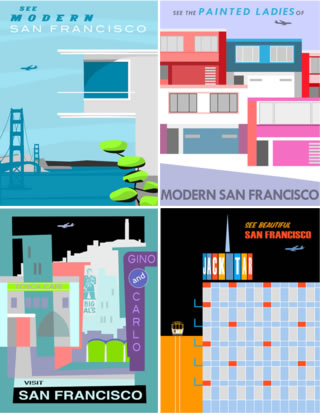 |
|
|
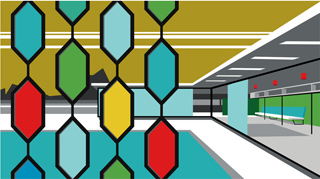 |
|
|
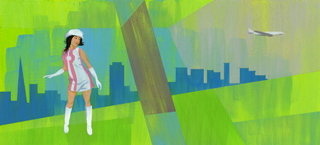 |
|
|
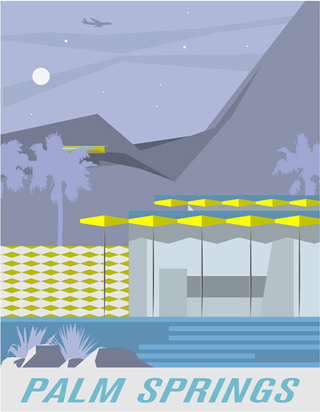 |
|
|
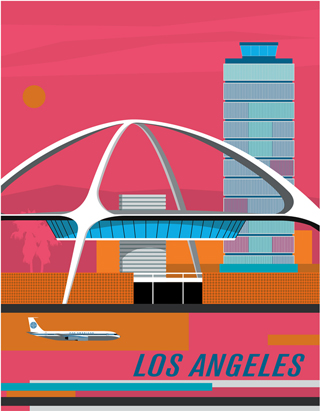 |
|
|
You can see the influence of graphic designer Saul Bass, who fitted together shapes and colors into a sort of jigsaw puzzle. You can see a bit of the American painter Stuart Davis, whose lively, collage-like paintings from the 1930s and '40s incorporated words from advertisements and billboards. Murphy borrows a bit from Sacramento painter Wayne Thiebaud, whose precipitous vertical streets can be seen in some of Murphy's cityscapes.
But Murphy has a style of his own. He treats San Francisco's forgotten modern buildings less as three-dimensional objects than as flattened abstractions. Even when he shows two sides of a building, they come across as flat planes, not as containers of space.
Many of his works are so abstract they resemble serial minimalist paintings. But other prints revel in shadow and romance, like his image of the Li Po Tavern and Buddha Lounge in Chinatown.
Besides his hard-edge prints, Murphy also does acrylic and gouache paintings in a looser, painterly style, but still reminiscent of mid-'50s art.
He may be moving into larger work as well. A Los Angeles gallery suggested he produce larger paintings. "I said I can't," Murphy says.
But he gave it a shot and the results—one was 3.5 by 4 feet—were pretty good, he says. "All these things I tell myself I just really could not do, I'm not saying I'm great at them but I can do something that's presentable at least," he says with a laugh.
Murphy's been that kind of go-with-the-flow guy from the start. He even got into architecture almost by default. San Francisco-born and South San Francisco-raised, the son of a contractor, Murphy set out to study engineering.
That's when a counselor at the College of San Mateo, eyeing his so-so grades, said, "Well what about architecture," Murphy recalls.
"I said, 'Let's give it a shot,' and I just took to it."
After two years at the University of New Mexico, plus time working as a hotel bellhop, Murphy emerged as an architect in 1991. He worked for several Bay Area firms, doing jobs that were rewarding and jobs that were not—"someone's deck or whatever, for people who didn't really have good taste."
"I was never interested in teaching, never interested in working for a big firm," Murphy says, "just in having my own office and doing nice residential and commercial work, working for clients with good taste. And I don't mean wealthy clients. I mean people with a good eye and who were sympathetic to the things that I like. Because then it's enjoyable."
Motivating the move was his girlfriend, a woman from Ireland. The relationship with her came to an end but Murphy stayed, explored his roots in County Kerry, and took advantage of the booming Celtic Tiger economy to work with one of the top firms in the county.
He also met his future wife, Marta, a Spanish woman working as an architect in Dublin, at a pub popular with architects.
The two later moved to London, then five years ago to California. They married at Foreign Cinema, a combination restaurant-movie theater-bar in the Mission district, and honeymooned—where else—in Palm Springs, staying at the mid-century classic Orbit In.
Both worked as architects, for different firms, until a proposed Livermore arts center Murphy was working on was cancelled, leaving him out of work. That's when he took to art.
Although Murphy has worked for many years as an architect for large and medium–sized firms, and as a building designer on his own, he never got his architect's license, in part, he says, because he was too busy on projects, and because his jobs, including those in Europe, didn't require one.
Murphy and his wife live in a quietly mid-century modern apartment house (terrazzo floors, tile mosaic walls in the entryway) with a view of the ocean in San Francisco's Richmond district. They've filled their compact home with modern furniture of blond wood, a Tiki or two, and his studio.
Murphy enjoys the ten-block bike ride to the ocean, and cruises up nearby hills for more vigorous exercise.
He hasn't entirely given up architecture. Back in London, when he was still working on real buildings, he began designing 'concept houses' that might be called Fifties Fantasies—streamlined and blast resistant, with living spaces floating above cantilevered carports. Since he was his own client, he could design what he liked.
"Just artistic exercises. I thought," Murphy says. But if you really want to build one, he says, just ask.
• Michael Murphy's art is available through his website, supersonic.designinblue.com, and at several shops, including Residents Apparel Gallery, Zinc Details, and Wonderland SF in San Francisco.
Photos: David Toerge
- « first
- ‹ previous
- 1
- 2
- 3




